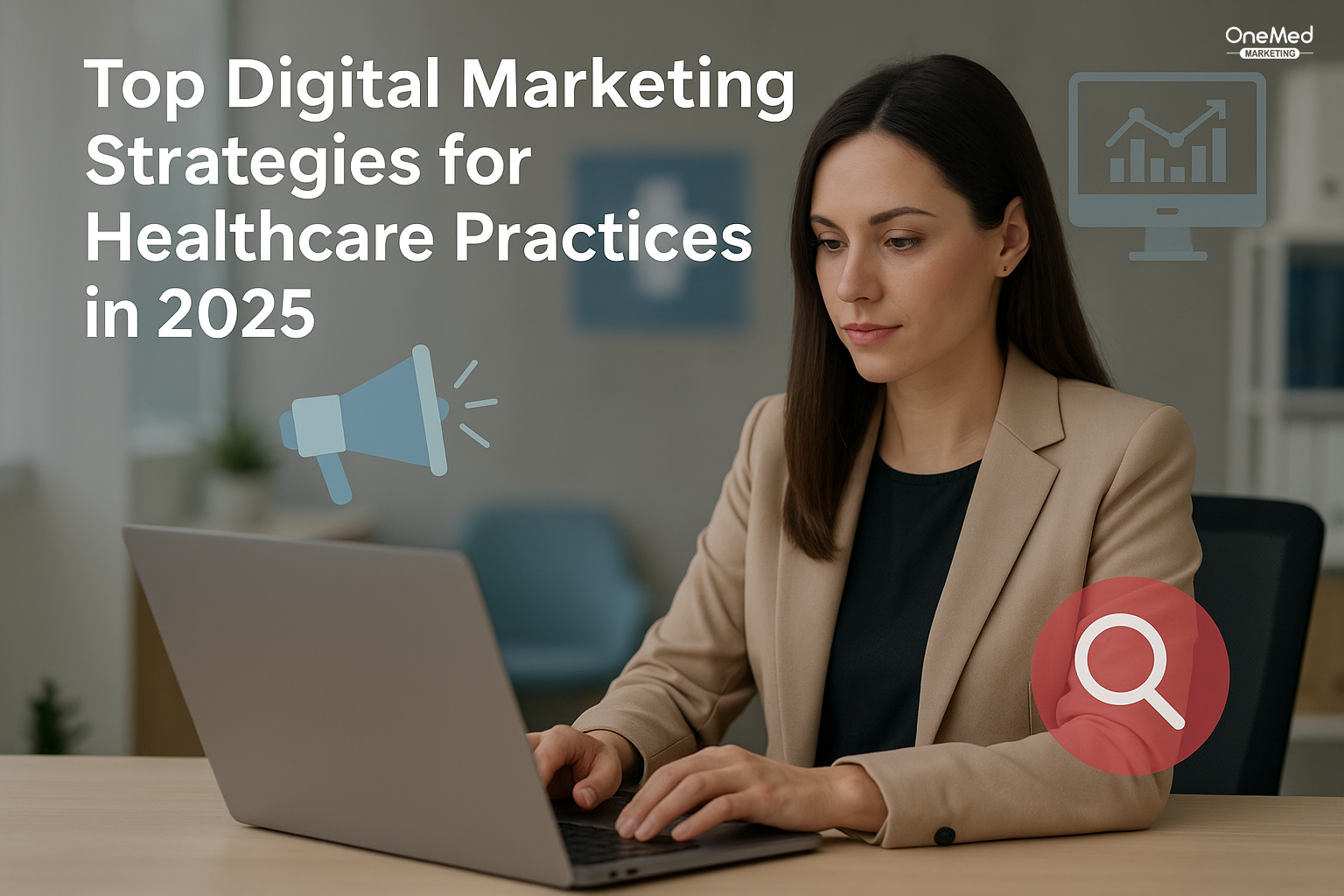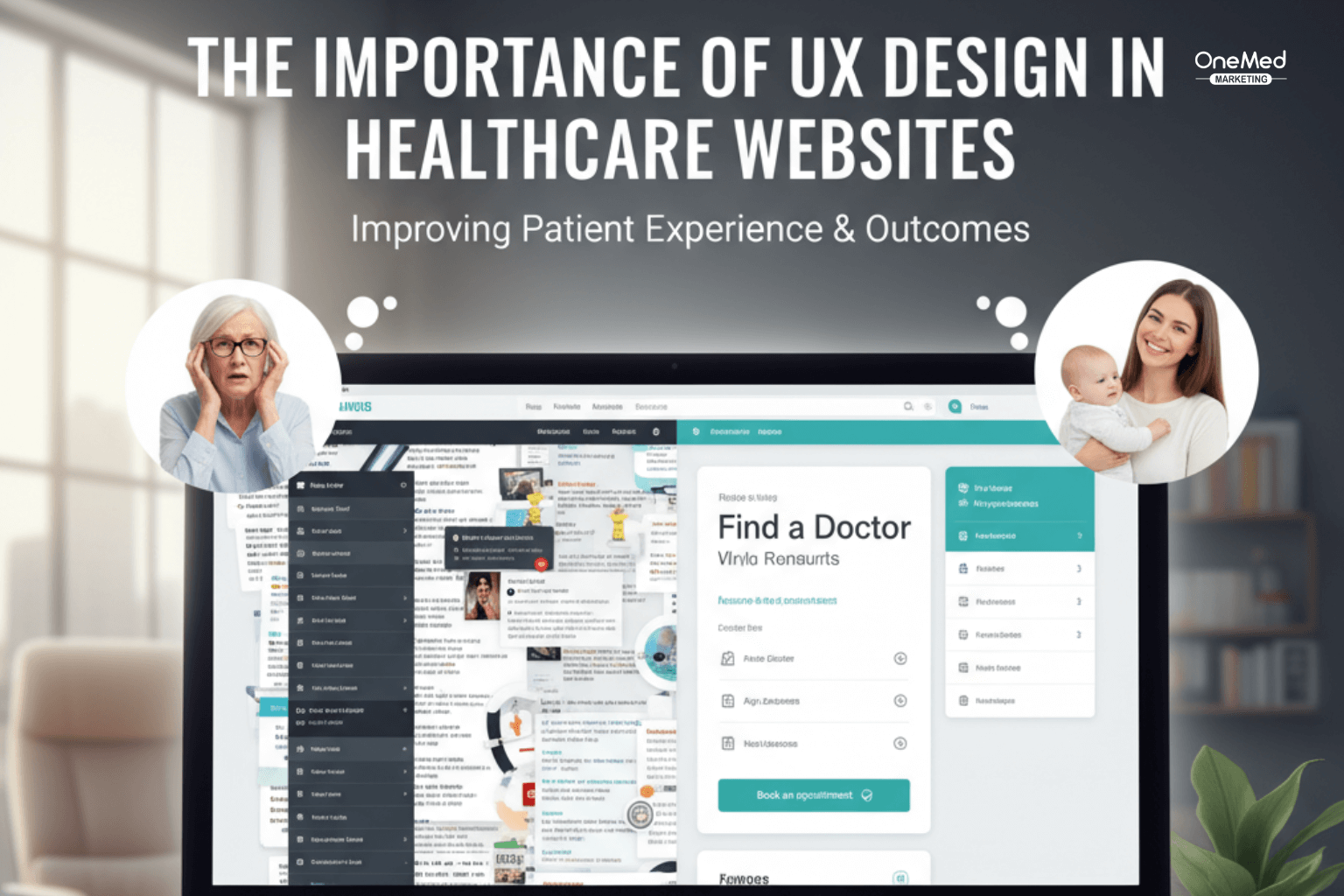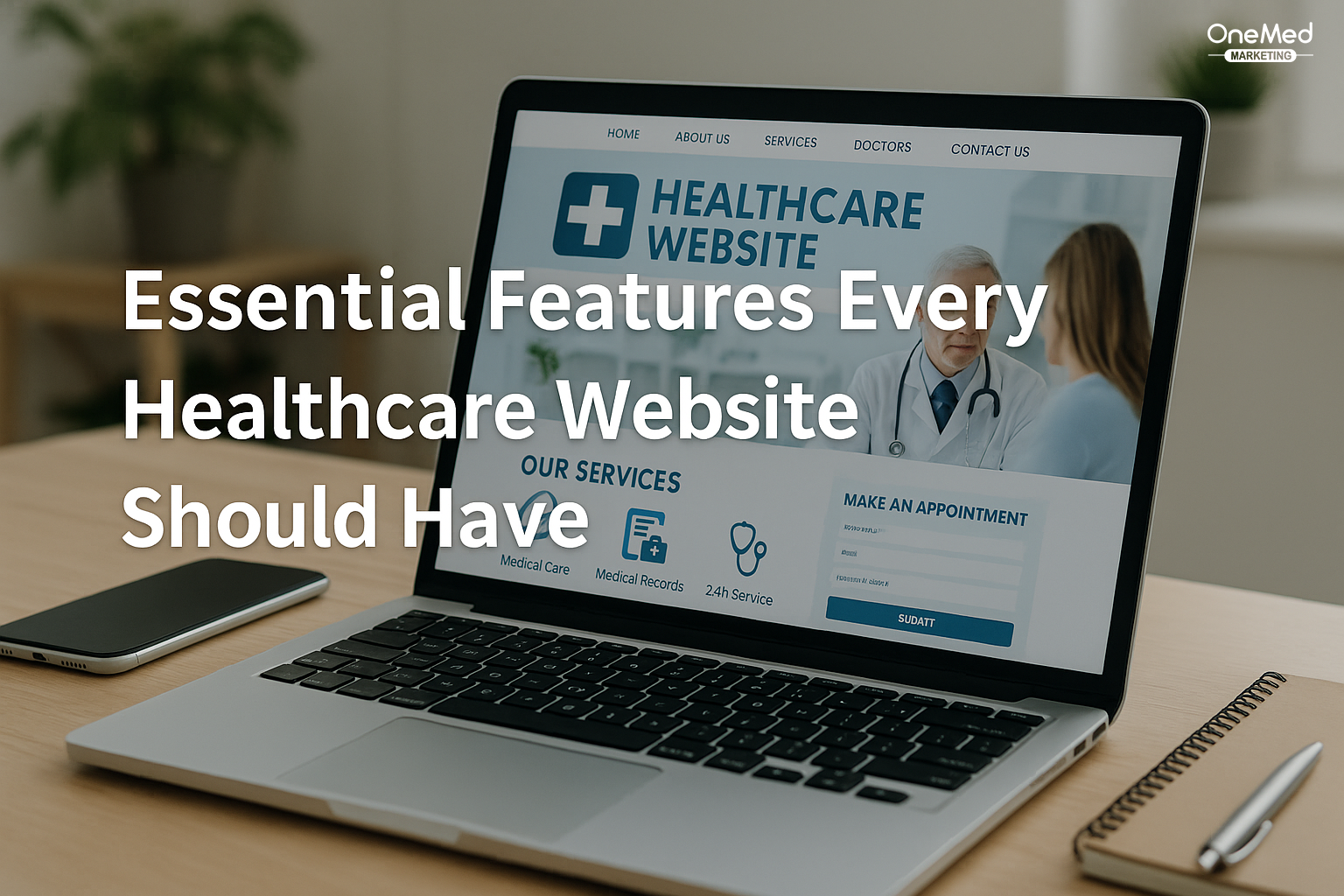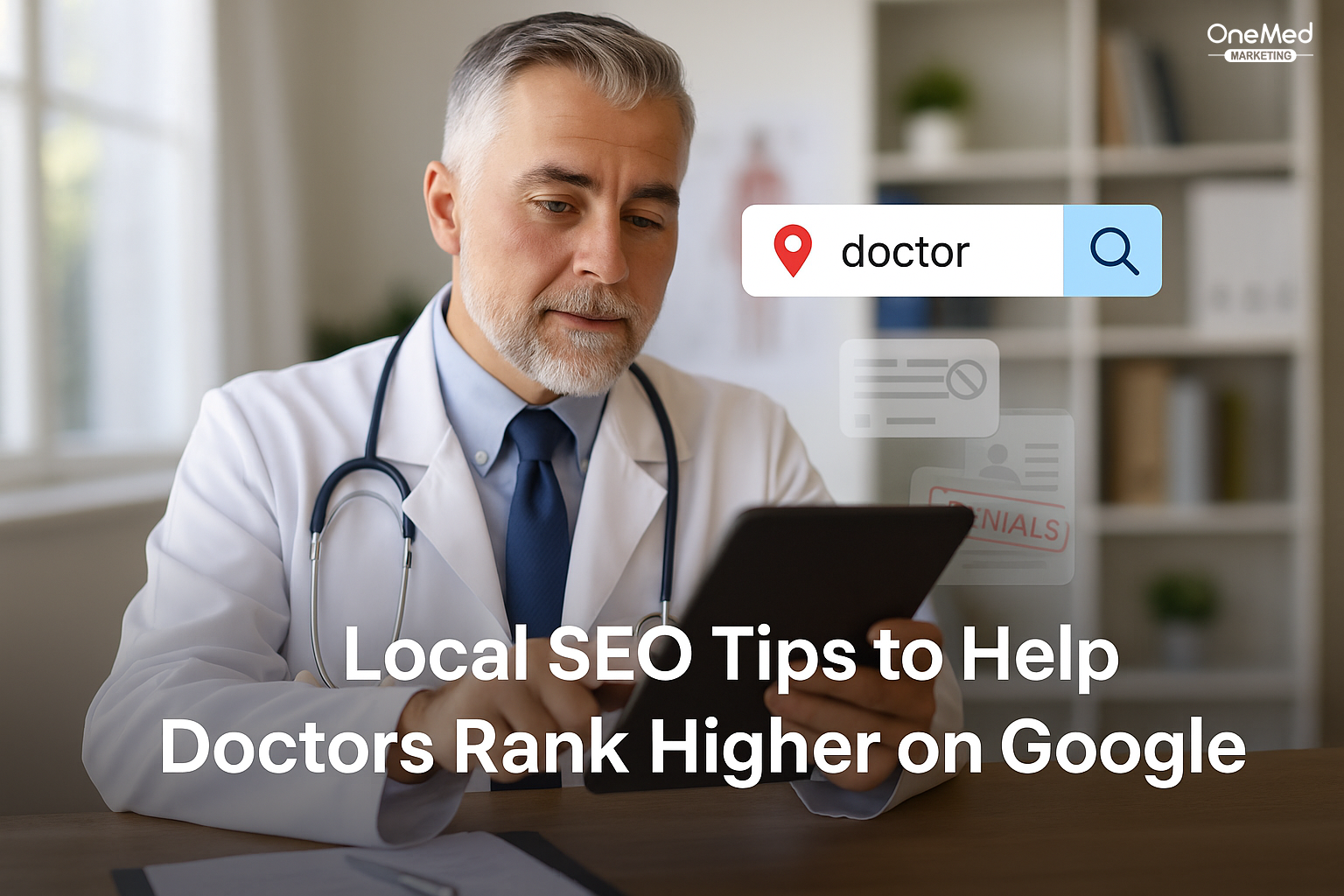- info@onemedmarketing.com
- 4th Floor, Nemours Building, 1007 North Orange St. , Wilmington, DE 19801, United States

Top Digital Marketing Strategies for Healthcare Practices in 2025
The way patients find healthcare has changed dramatically in the last few years. Most people now begin their search online, whether they are looking for a family doctor, a specialist, or even telehealth options. For healthcare practices, this means digital marketing is no longer optional. It is one of the most reliable ways to connect with patients, build trust, and grow a practice.
In 2025, competition is tougher and patient expectations are higher. People want information quickly, clear communication, and proof that a provider is credible before they book an appointment. The right digital marketing strategies help practices stand out, reach the right patients, and build long-term relationships.
In this blog, we will cover the following topics
- Why Digital Marketing Matters for Healthcare Practices in 2025
- Building a Strong Online Presence
- Content Marketing for Patient Education
- Search Engine Optimization (SEO) Strategies
- Paid Advertising for Healthcare Growth
- Social Media Marketing for Patient Engagement
- Email Marketing and Patient Retention
- Online Reviews and Reputation Management
- Leveraging Telehealth and Virtual Care Marketing
- Data-Driven Marketing and Analytics
- Compliance in Healthcare Digital Marketing
- Future Trends in Healthcare Digital Marketing
- Conclusion
- Frequently Asked Questions
Why Digital Marketing Matters for Healthcare Practices in 2025
Patients today expect the same level of convenience from healthcare as they do from other services. They want to find providers online, read reviews, compare services, and even schedule appointments digitally. Practices that rely only on word of mouth or referrals risk losing visibility. A strong digital presence not only brings in new patients but also strengthens relationships with existing ones.
Building a Strong Online Presence
Optimizing your healthcare website
Your website is the first impression most patients will have of your practice. It should be easy to navigate, load quickly, and clearly explain your services. A confusing or outdated website can make patients move on to another provider.
Creating mobile-friendly pages
More than half of online searches happen on mobile devices. If your website is not mobile-friendly, patients will leave. A mobile-optimized site with click-to-call buttons and simple forms makes it easier for patients to take action.
Using local SEO to reach nearby patients
Most patients search for providers “near me.” Local SEO ensures your practice shows up in these searches. Adding your clinic details to Google Business Profile, keeping hours updated, and encouraging reviews are all part of a strong local SEO strategy.
Content Marketing for Patient Education
Blogging with simple and clear healthcare information
Blogging helps practices answer common patient questions and build trust. Writing about topics like “How to prepare for your first telehealth visit” or “What to expect from a routine checkup” positions you as a reliable source.
Creating video content
Short, educational videos are powerful tools. Patients connect more easily with video than with text alone. Explaining preventive care tips or introducing your team through video builds familiarity and confidence.
Sharing infographics and guides
Infographics make complex health topics easier to understand. Sharing these on social media or your website can help patients grasp important concepts quickly, such as vaccination schedules or steps for managing chronic conditions.
Search Engine Optimization (SEO) Strategies
Using long-tail keywords patients search for
Instead of focusing only on broad keywords like “dentist,” target long-tail phrases like “affordable pediatric dentist in Dallas.” These terms match real searches and bring in patients who are ready to book.
Building topical authority
Google rewards websites that show expertise. Creating clusters of content around key services, such as cardiology or physical therapy, helps establish your practice as an authority in that field.
Leveraging schema markup
Schema markup adds extra details to your website, such as clinic hours, services, or reviews. This makes your site more visible in search results and helps patients quickly find what they need.
Paid Advertising for Healthcare Growth
Running targeted Google Ads
Google Ads allow you to appear at the top of search results when patients are actively looking for care. With the right targeting, you can reach patients within your city or even your neighborhood.
Using social media ads
Platforms like Facebook and Instagram allow you to reach specific demographics, such as parents with young children or seniors. Ads that highlight services or promote health events can drive awareness and appointments.
Measuring ROI
Every ad campaign should be tracked. Measuring clicks, calls, and appointments helps you understand what works and ensures money is being spent wisely.
Social Media Marketing for Patient Engagement
Choosing the right platforms
Not all platforms fit every practice. LinkedIn may be better for specialists, while Instagram or Facebook work well for family practices. Focusing on the right channel saves time and builds stronger engagement.
Building trust through posts
Posting regularly about health tips, team updates, or seasonal reminders (like flu shot availability) builds familiarity. Patients are more likely to engage with practices that show consistency.
Using patient stories
With permission, sharing testimonials or patient success stories builds credibility. It shows real results and encourages others to book care with confidence.
Email Marketing and Patient Retention
Creating newsletters
A monthly email newsletter with health tips, updates, and reminders keeps your practice in front of patients. It builds loyalty and encourages repeat visits.
Automating reminders
Appointment and checkup reminders sent by email reduce no-shows. Patients appreciate the convenience, and practices save time by using automated systems.
Personalizing communication
Emails that address patients by name or focus on their needs, such as reminders for annual screenings, feel more personal and effective.
Online Reviews and Reputation Management
Encouraging positive reviews
Satisfied patients often just need a gentle reminder to leave a review. A quick text or email after a visit can boost your online reputation.
Responding to negative feedback
Ignoring negative reviews makes things worse. Responding respectfully shows professionalism and care, even when issues arise.
Building credibility
Consistent reviews build credibility. Patients trust providers who are transparent and have a track record of positive feedback.
Leveraging Telehealth and Virtual Care Marketing
Promoting telemedicine services
Many patients now prefer telehealth for convenience. Practices should highlight these services clearly on their websites and social channels.
Explaining convenience
Patients need to know the benefits, such as avoiding travel or getting quick access for minor concerns. Clear explanations drive higher adoption.
Sharing success stories
Testimonials from patients who used telehealth successfully can encourage others to try it as well.
Data-Driven Marketing and Analytics
Tracking website traffic and leads
Analytics tools show where patients are coming from and which campaigns bring the most appointments.
Improving conversion rates
Data helps identify problems. If many patients visit your site but do not book, small fixes to forms or calls-to-action may solve the issue.
Making decisions with data
Instead of guessing, data-driven insights guide smarter marketing investments and save money.
Compliance in Healthcare Digital Marketing
Following HIPAA rules
Protecting patient information is essential. Marketing must never share private details or data without permission.
Securing digital communication
Emails, forms, and online chats should be encrypted to maintain patient trust.
Using ethical practices
Transparency in ads and communication keeps your practice credible and avoids regulatory trouble.
Future Trends in Healthcare Digital Marketing
The role of AI and automation
AI tools can help with scheduling, chat support, and personalized marketing. They save time while improving the patient experience.
Voice search
Patients are using smart speakers and phones to find providers. Optimizing for voice search makes sure your practice appears in these results.
Personalized healthcare marketing
Patients expect information tailored to their needs. Marketing that feels personal, like targeted health reminders, will become even more important.
Conclusion
Healthcare marketing in 2025 is about meeting patients where they are — online. From building a strong website to using SEO, paid ads, and patient-focused content, digital strategies make it possible to connect with people in meaningful ways. Practices that embrace telehealth, collect and manage reviews, and use data to guide decisions will stay ahead of competitors.
Most importantly, success comes from trust. Patients choose providers who educate them, communicate clearly, and respect their privacy. By following these strategies, healthcare practices can grow their reach, strengthen patient relationships, and create a lasting digital presence.
Frequently Asked Questions
1. Why is digital marketing important for healthcare practices in 2025?
Digital marketing is important because most patients search online before choosing a provider. A strong online presence helps practices reach new patients, build trust, and stay competitive.
2. What digital marketing strategy works best for healthcare practices?
There is no single best strategy. A mix of local SEO, patient education content, online reviews, and social media engagement usually delivers the strongest results.
3. How can healthcare providers use social media effectively?
Providers can use social media to share health tips, updates about services, and patient success stories. Consistent, helpful posts build trust and keep the practice visible to the community.
4. Is paid advertising worth it for small healthcare practices?
Yes. Even small practices can benefit from targeted Google or social media ads. These campaigns can reach local patients actively looking for care and often bring quick results when managed well.








0 Comments
Leave a Comment